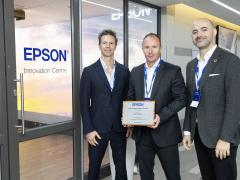EA Elektro-Automatik has launched an enhanced and expanded line of EA-PS and EA-PSI programmable DC power supplies. The 10000 series includes over 180 new models offering a greater range of power from 0 - 600 W to 0 - 30 kW. The models provide extended voltages from 0 - 10 V to 0 - 2000 V, a significant increase over prior 9000-series power instruments; they also provide output current as high as 1000 A.
All 10000 series instruments operate on the same firmware and have the same touchscreen user interface. The physical layout is the same, and all instruments have similar input and output characteristics. The common programming and user interface saves test development and setup time when building test systems that have requirements for multiple power instrumentation.
Access greater voltage and current in one device with auto ranging
All 10000 series instruments employ an auto ranging output (input if an electronic load) characteristic. Auto ranging enables the instrument to have a higher voltage capability at lower currents and a higher current capability at lower voltages than a power supply, or load with a conventional rectangular output/input characteristic. Furthermore, an instrument with auto ranging output/input can deliver/accept full power output over a significant portion of the instrument’s operating range. This is in contrast to an instrument with a rectangular output characteristic which has maximum power only at its maximum voltage and current. The benefit of EA’s auto ranging capability for a test engineer is access to a wider range of voltages and currents, enabling the engineer to test more applications without the need for multiple power level supplies.
The EA-PSI supplies, EA-PSB supplies and EA-ELR loads all have a built-in function generator to allow creation of complex signals riding on a DC bias and to simulate the characteristics of various devices such as solar cells, batteries and fuel cells. Special functions enable maximum power point tracking (MPPT) and EN 50530 for solar panel inverter testing and LV123-, LV124-, and LV148-standard based test sequences for testing of automotive components and systems. The built-in functions simplify the tasks of programming the instrument to simulate various devices and create sequences of outputs (or inputs) to comply with key test standards.
Reduce power consumption with greater than 96% energy recovery
All models of the 10000 series employ active power factor correction, typically 0.99, to minimise the power drawn from the power grid. Additionally, EA-PSB bi-directional power supplies and EA-ELR electronic loads employ regenerative circuitry to return energy back to the grid with up to greater than 96% efficiency. Regenerative circuitry saves operation costs and the expense of cooling requirements to dissipate the heat that a conventional electronic load generates.
Communicate easily to PCs and PLCs
The 10000 series instruments work effectively in either PC-controlled test systems or PLC-controlled industrial processes. Engineers can easily program the instruments using SCPI or ModBus programming modes. The 10000 series instruments have an extensive set of interfaces. PC interfaces include Ethernet, USB and RS-232, while PLC interfaces include CanBus, Profibus, ModBus, Profinet, and EtherCat, among several other interface options.
Parallel for high-power systems up to 1.92 MW
Test engineers can parallel up to 64 of the 10000 series power supplies and loads using the master-auxiliary bus to enable one instrument to control all instruments in the system. The system can consist of any combination of instrument power levels within the same EA-XXX family (EA-PSB, EA-PSI, EA-ELR, etc). A galvanically isolated share-bus interface in each instrument ensures that all the instruments safely share the load requirements so that the entire rack can operate with full performance.
For more information call Vepac Electronics on 0114548053 or sales@vepac.co.za














